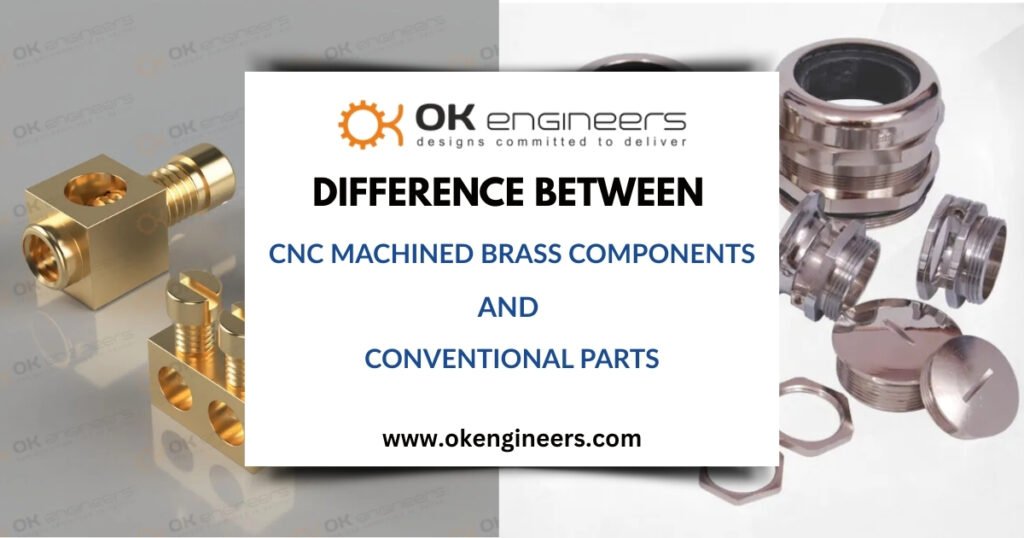In today’s manufacturing world, the shift from conventional machining to CNC (Computer Numerical Control) machining has transformed how components are produced—especially in the case of precision brass parts. For any reputable Brass Electrical Components Exporter, this technological upgrade is not just about staying competitive—it’s about offering consistency, speed, and precision that conventional methods simply can’t match. When sourcing components for electrical applications, especially in international markets, buyers increasingly prefer CNC machined brass parts due to their higher reliability.
Top Brass Electrical Components Exporter now rely heavily on CNC machines to meet the stringent demands of modern electrical and industrial applications. These machines leave the variability observed in manual machining, which ensures each component fulfils the exact specifications. From terminals and connectors to custom fittings and switchgear accessories, CNC machining allows exporters to supply high-volume orders with uniformity, making them ideal partners for companies in sectors like power distribution, automotive, and lighting.
Key Differences Between CNC and Conventional Brass Components
The primary difference between CNC machined brass components and conventional parts lies in accuracy and repeatability. CNC machining uses pre-programmed software to control the movement of tools, ensuring every part is produced to the exact same dimensions. In contrast, conventional machining depends on operator skill, which can lead to slight variations in each part.
Another significant difference is efficiency. With minimal human intervention, CNC machines can run continuously and create complex geometries. This translates to faster turnaround times and lower chances of error—an essential factor for a Brass Electrical Components Exporter catering to international clients. Conventional methods, though still used in low-volume or prototyping scenarios, are gradually being phased out for large-scale production due to higher labor costs and longer lead times.
Material Optimization and Customization
CNC technology also allows for material optimization. Less brass is wasted during production, reducing costs and environmental impact. Moreover, CNC machining supports easy customization. Exporters can adjust dimensions, threading, and other details digitally—ideal for fulfilling unique client requirements without needing multiple manual setups.
Conclusion
Whether you are sourcing for domestic applications or global distribution, the advantages of CNC machined parts are hard to ignore. As a business, partnering with a trusted Brass Electrical Components Exporter that specializes in CNC machining ensures you get consistent quality, tight tolerances, and faster delivery. In the evolving world of electrical hardware and industrial fittings, CNC machining is not just an option—it’s the new standard. Visit OK Engineers For More Information.
FAQ’s
1. What is the main advantage of CNC machined brass components over conventional ones?
CNC machined brass components offer superior accuracy, consistency, and repeatability compared to conventional parts. They are produced using pre-programmed software, minimizing human error and ensuring every piece meets exact specifications.
2. Why do international buyers prefer CNC machined brass electrical components?
International buyers value CNC machined components for their high reliability, precision, and fast turnaround times—essential qualities in sectors like power distribution, automotive, and lighting.
3. How does CNC machining support customization in brass components?
CNC technology allows exporters to digitally modify dimensions, threading, and other features without extensive manual adjustments. This makes it easy to fulfill custom orders efficiently.
4. Is CNC machining more efficient than traditional methods?
Yes, CNC machines operate with minimal human intervention, can run continuously, and produce complex geometries faster. This improves productivity and reduces labor costs.
5. Can CNC machining help reduce material waste?
Absolutely. CNC machining optimizes material use, resulting in less brass waste. This not only lowers production costs but also supports eco-friendly manufacturing practices.
Follow Us On – Facebook, Instagram
You May Also Like: Brass Electrical Parts Buyers in India, Brass Sanitary Fittings Dealer for Quality Products



